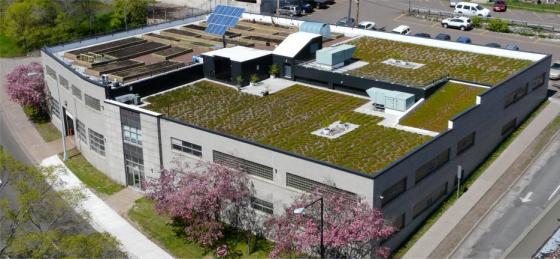The study comprises three parts.
Green roof co2 absorption.
And 3 computer simulation of.
Like any forested or vegetation covered area a patch of green on top of a roof should theoretically lower levels of carbon dioxide in the air.
A study presented at the green roofs for healthy cities conference in june 2004 cited by the epa found water runoff was reduced by over 75 during rainstorms.
Green roofs can reduce stormwater runoff via water wise gardening techniques.
Green roofs play a significant role in retrofitting the low impact development lid practices in urban areas.
The co2 absorption rate of a plant in the daytime was much higher compared with the co2 emission rate at night providing the green roof ability to reduce the co2 concentration in the nearby region.
Green roofs offset global warming study finds.
By also accounting for absorption in the roots and growing medium the total absorption is assumed to be many times greater.
Green roofs can make a big contribution to reducing co 2 emissions.
Experimental studies have shown that an extensive sedum roof can absorb approximately 1 2 kg of co 2 m 2 year in the plants themselves.
1 field measurement of the difference of co 2 concentration at a location in the middle of the plants in a small plot of green roof and one in the surrounding area 2 experiments to measure the plant s co 2 absorption velocity and emission rate using a sealed glass chamber.
Green roofs reduce stormwater runoff mitigate urban heat island effects absorb dust and smog sequester carbon dioxide produce oxygen create space for food production and provide natural.

